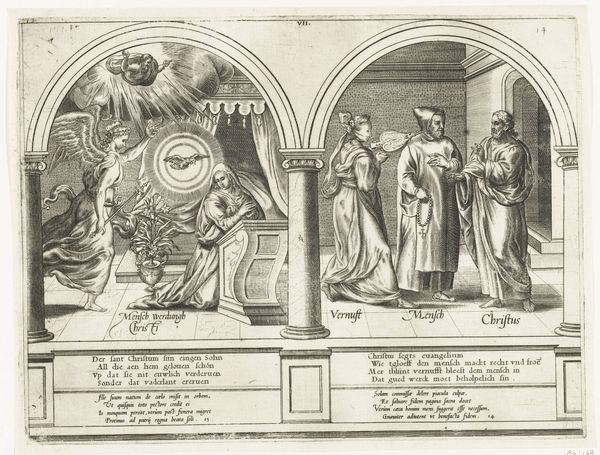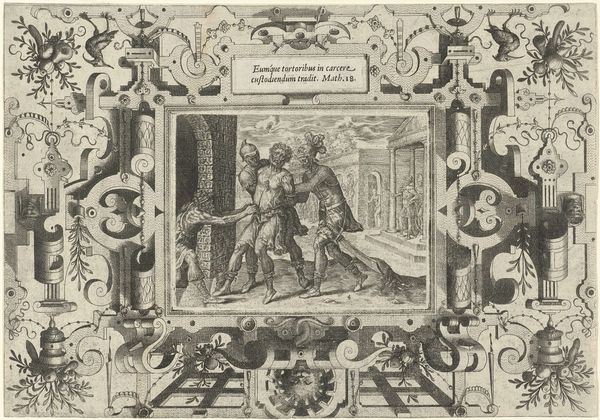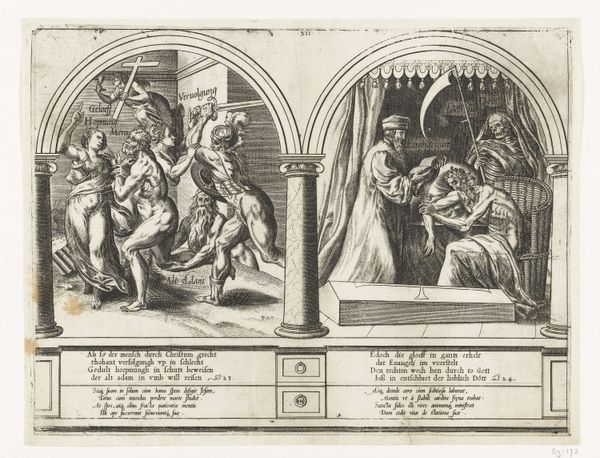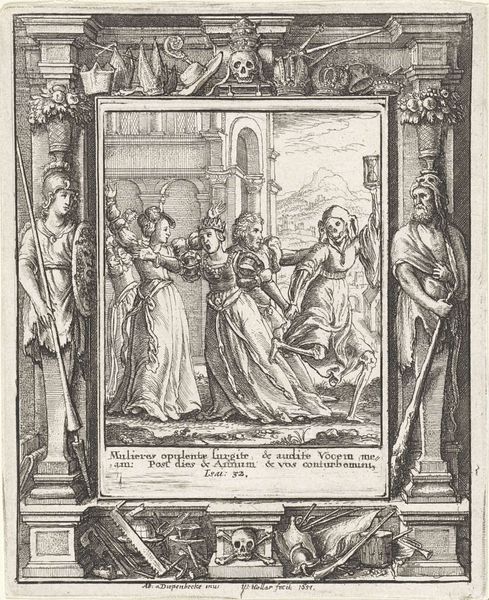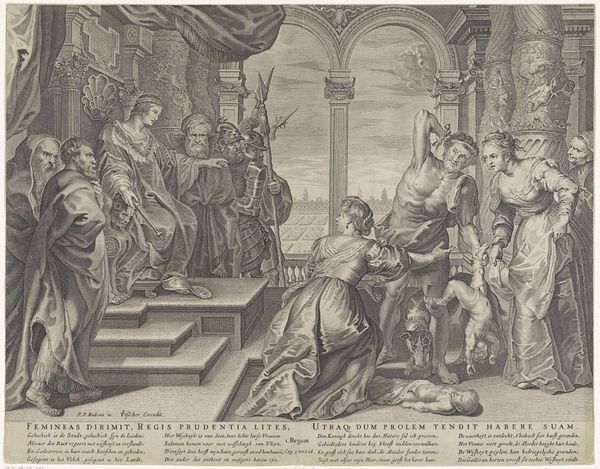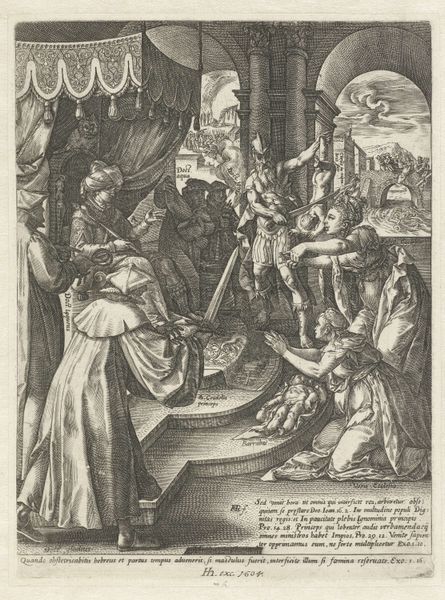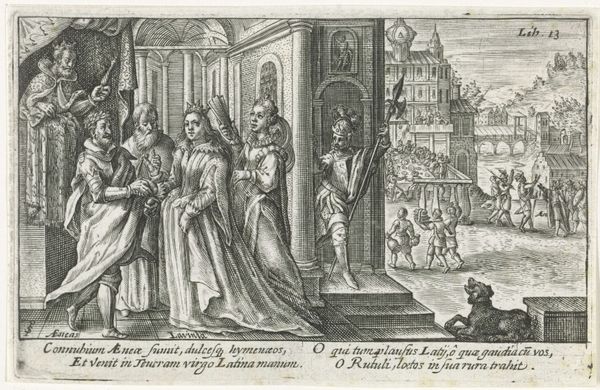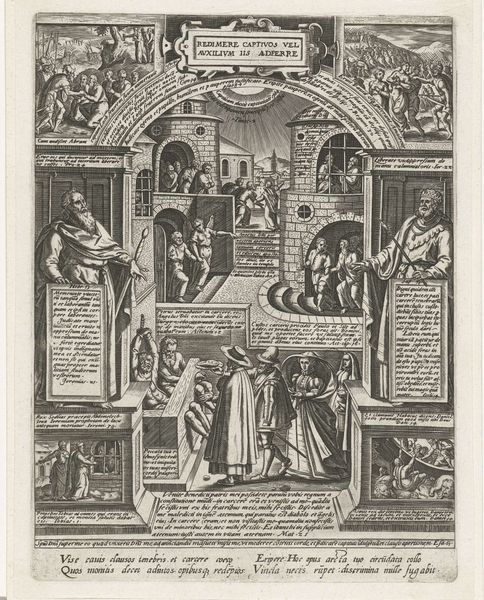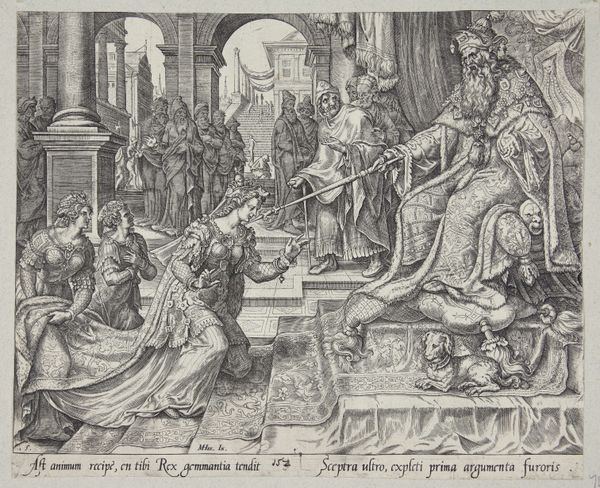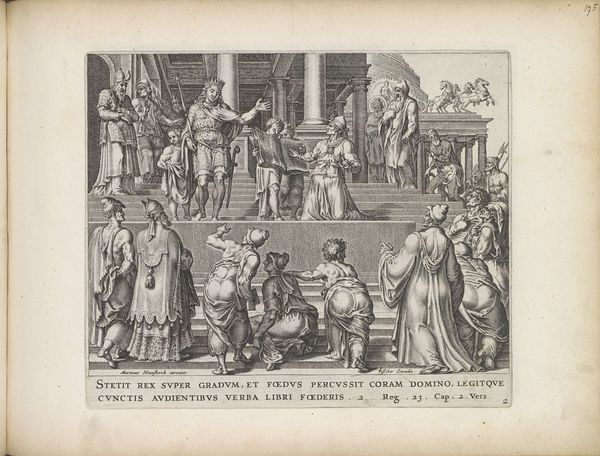
print, intaglio, pen, engraving
#
narrative-art
#
pen drawing
# print
#
intaglio
#
pencil sketch
#
old engraving style
#
figuration
#
11_renaissance
#
pen-ink sketch
#
pen work
#
pen
#
genre-painting
#
history-painting
#
northern-renaissance
#
engraving
#
pencil art
Dimensions: width 241 mm, height 195 mm
Copyright: Rijks Museum: Open Domain
Curator: Welcome to the Rijksmuseum. We’re standing before a fascinating engraving titled “De mens op zestigjarige leeftijd,” or "Man at Sixty Years Old," made by Gerard van Groeningen around 1569-1575. Editor: My first impression is one of somber generosity. The entire composition, framed as it is, feels very theatrical, almost as though the viewer is watching a moral play unfold on a stage. The meticulous linework gives it a formal gravity. Curator: It is part of a larger series depicting the ages of man. The artist explores societal expectations and the perceived realities of different life stages during the Northern Renaissance. Think of it within the context of humanism and changing views on the individual's place in the world. Editor: And look at the rendering! Notice the detailed incisions that define form and texture, almost obsessively. This work truly emphasizes the labor invested in producing printed images during this period. Each line required precision and deliberate craft. It speaks to a dedicated production, with tangible results in the end product. Curator: Absolutely. Also, note the clear division in space. We see figures within a structured interior space, and in the background, more people interacting around what seems to be a church or temple. What do you make of this dichotomy? Editor: To me, that separation underscores how social performance changed over time. There’s a performative element, staged, contrasting the life inside with the wider world. This work isn’t merely decorative; it is also meant to be instructive, and even functional. Curator: Right. Prints like these were easily circulated, accessible beyond the elite, and served to disseminate ideas about morality and proper behavior. It suggests an evolving public sphere and visual culture. Editor: In essence, we have a tangible object reflecting cultural values and the very process of how such values were actively being produced and disseminated to shape behavior. Curator: This print encapsulates that shift, from the personal to the societal. Looking closely reminds me that, beyond the visual storytelling, these were also tools—instruments for guiding public thought. Editor: I appreciate how an examination of material processes unveils such powerful undercurrents.
Comments
No comments
Be the first to comment and join the conversation on the ultimate creative platform.
